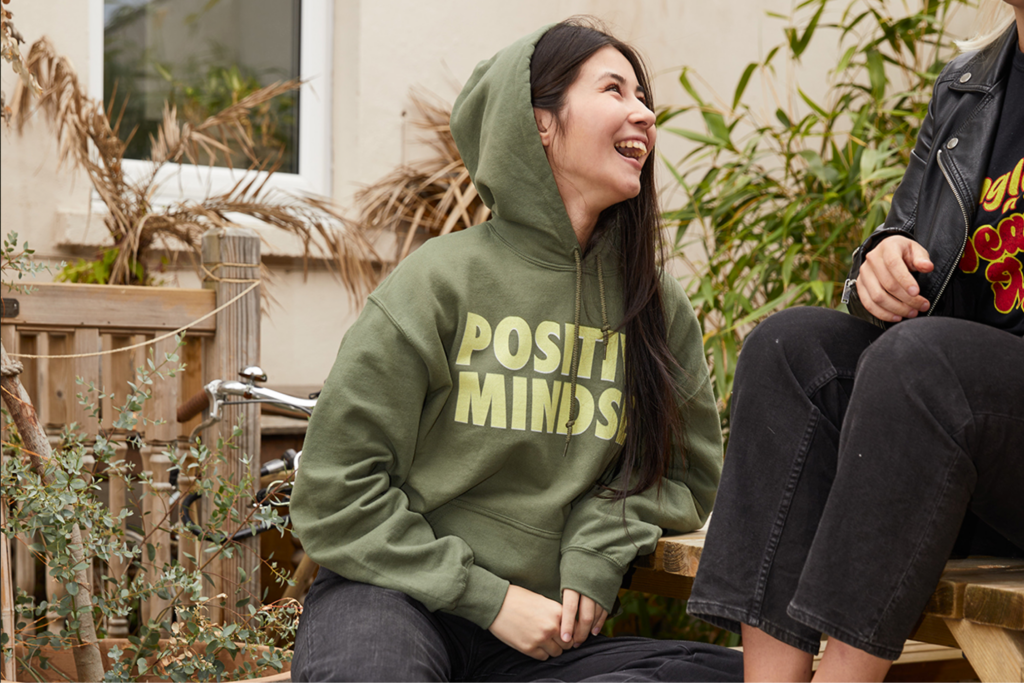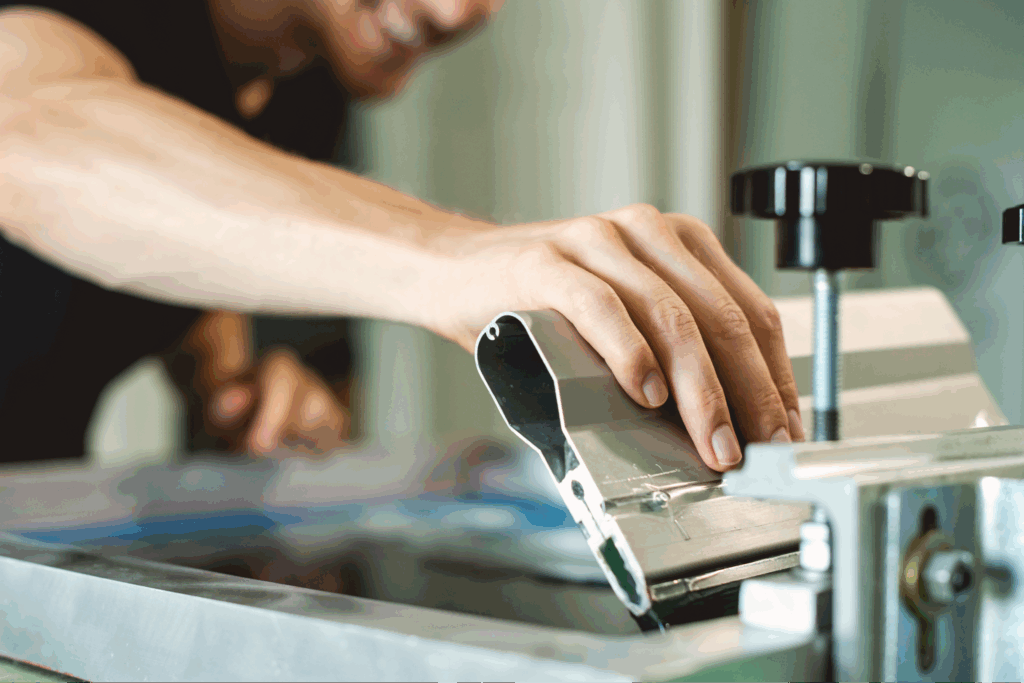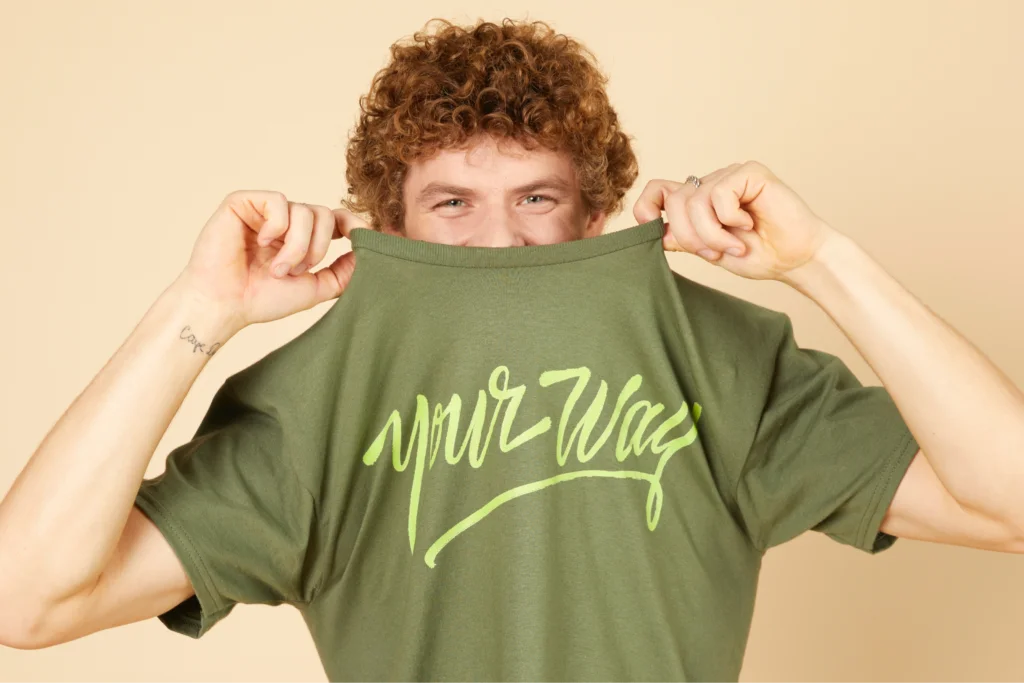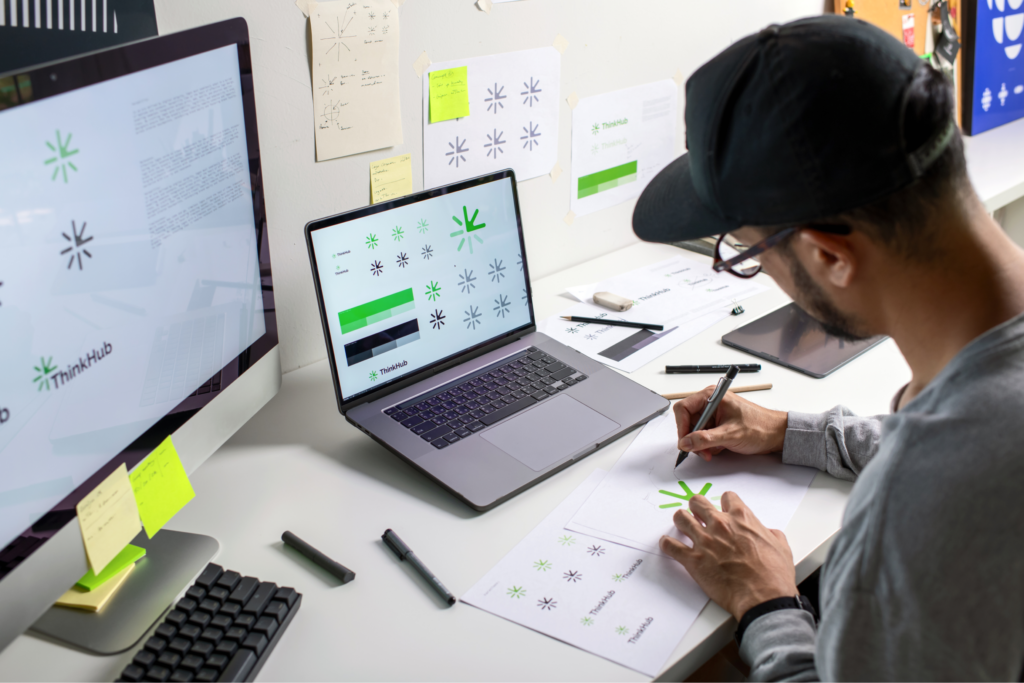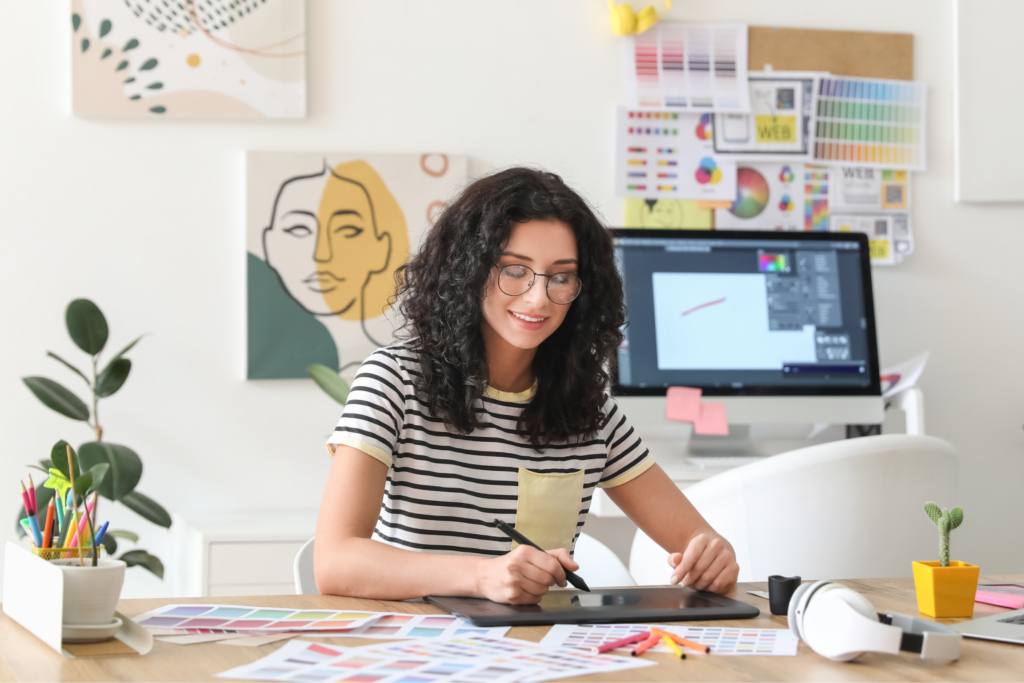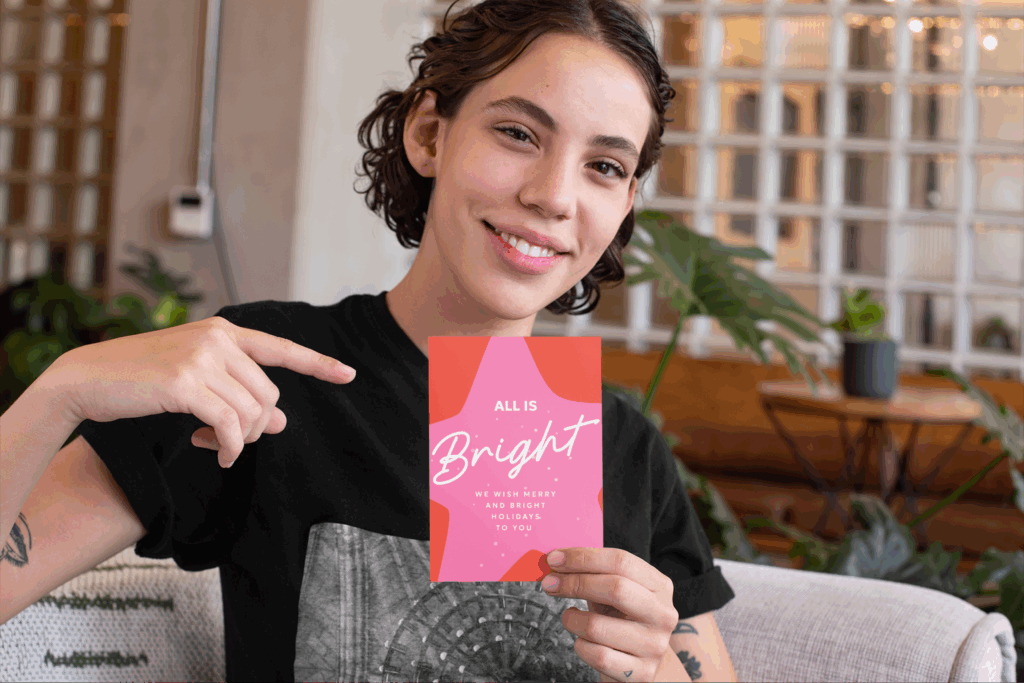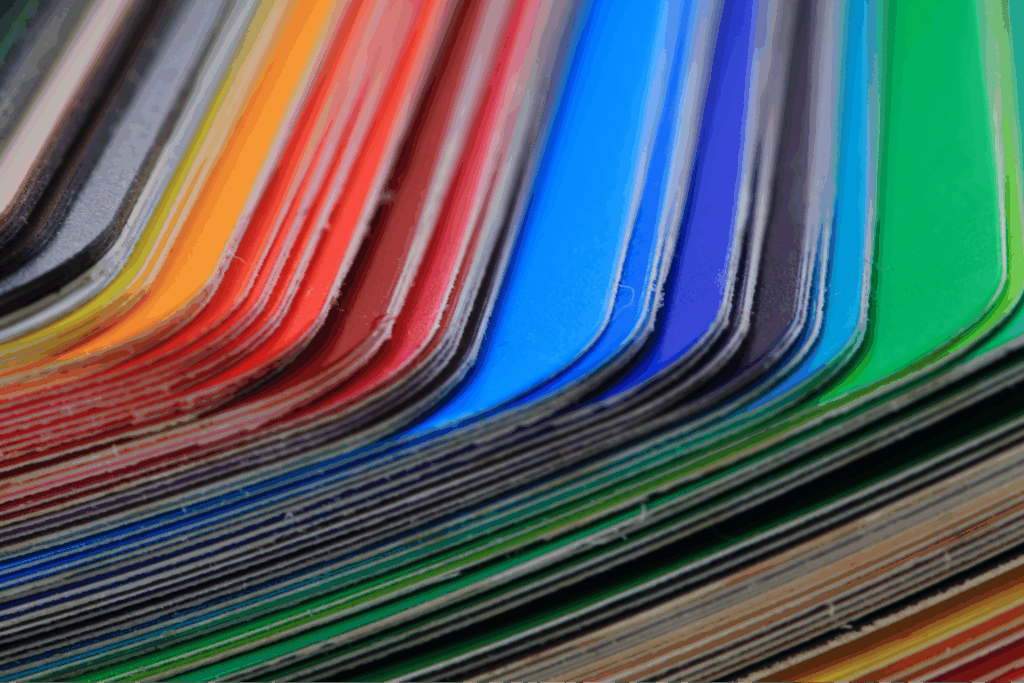Make a shirt with Printify today
T-shirts are a staple for everyday wear. It is a versatile piece of clothing that can be matched with a wide variety of bottoms like pants, skirts, and custom shorts. More than being a fashion favorite, custom t-shirts can express a statement and promote brand identity. It provides an outlet for creatives to craft the best designs that will please crowds and catapult any brand to fame.
T-shirt designing can both be a fun and commercial activity. Graphic artists can take inspiration from virtually anything, from famous people to quotes that anyone can relate to. Whether your goal is to design custom shirts or make a practical promotional shirt, here are some helpful tips to guide you in creating the perfect t-shirt design!
Establish your goal
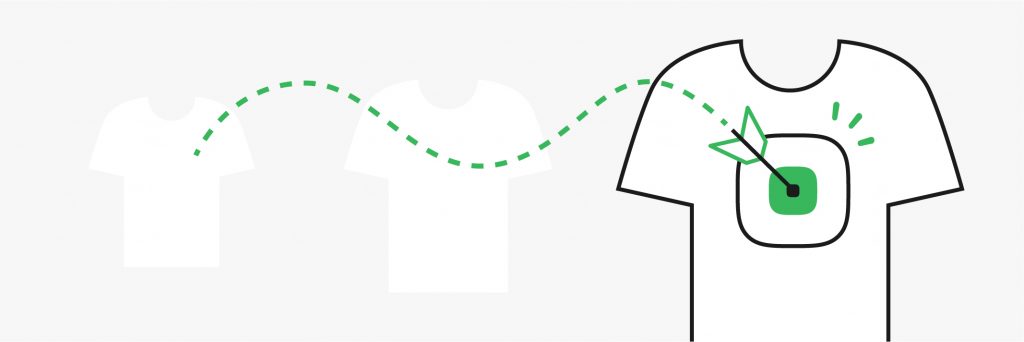
Initially, it might be a challenge to figure out the design that will capture the message you want the shirt to relay. Coming up with an idea may take a few days if you don’t know where to start.
During the brainstorming process, it is essential to ask this question: why are you designing a shirt? Establishing the main reason for t-shirt designing is the first step to conceptualizing the design. It would involve branding to an extent, and your shirt must communicate the goal.
You can base off of some of these common reasons to guide you in t-shirt designing:
- Brand value. It’s convenient to depict brand identity or provide a visual representation of the products and services that the company offers.
- Internal marketing.
- Promotion. Shirts are a walking advertisement. It can be a useful tool for brand recognition, which influences a consumer’s buying decision.
2. Layout your design

Once you have a vivid idea of why you’re designing a shirt, it’s time to come up with the concept. The design could go a million different ways, which is why you need to take the time to visualize the design from your mind to paper.
To make it easier, create a detailed list of the elements you want to include. Take time to sketch out an initial draft and make several variations to come up with the best one. You also have to consider the details of the design that works well together to unify the concept.
Style and imagery
Design elements like style and imagery depend on what your brand wants to convey and what sort of audience the shirts will be presented to. For instance, a brand catering to teens will likely use animated characters and components that spell fun and stylish.
Color scheme
Personality is better expressed using a color scheme. Every graphic designer knows how indispensable shades, tints, and hues are in designing, although you have to more careful when applying color palettes on a shirt.
Choosing the right colors will make or break the tee, especially when designing on colored shirts. There’s no standard, but light-colored designs usually look best on dark-colored fabric, like navy or black shirts. Alternatively, dark-colored designs are effective on gray and white tees.
Keep in mind that inks could look different when printing. Approximating colors can be challenging, so make sure to use Pantone (PMS) or custom-blended CMYK. The latter is more expensive but virtually recreates colors from design to the print precisely.
T-shirt design placement
Centering the design is the most common placement, particularly for brand promotion. However, there are many areas to choose from, such as top-left or a wrap-around image. Placing it on the back of the shirt is also a viable option for company logos or slogans.
You also need to keep in mind that when a shirt is worn, the design can be bunched up or hit awkward parts on the body.
One of the most common t-shirt design blunders includes the belly print, which is an unflattering placement. Keep the image flat to ensure that the printed version remains clear and readable.
Typography
Typography in shirt designing is ensuring that the typeset is cohesive to the concept. Any text on display involves typography, such as in choosing the typeface or font, line spacing and letter spacing, and its harmony to other graphic elements in the design.
Also, one rule of thumb for typography is to never use over three fonts on a single design.
Text can be a smart addition to your design, but only if it works well with the other elements on the tee. Avoid committing mistakes like using all-caps on a single script typeface or choosing a font that does not apply to the theme (ex: using Batman Forever for a corporate event tee would likely be frowned upon).
3. Get the composition right

Composition is one of the fundamental lessons in high school art classes, and it stays relevant to graphic designing. Every concept that has multiple elements need to be arranged relative to space and each other. Many designers believe that a well-composed idea depends on opinion, but sticking to some basic composition guidelines can enhance the design.
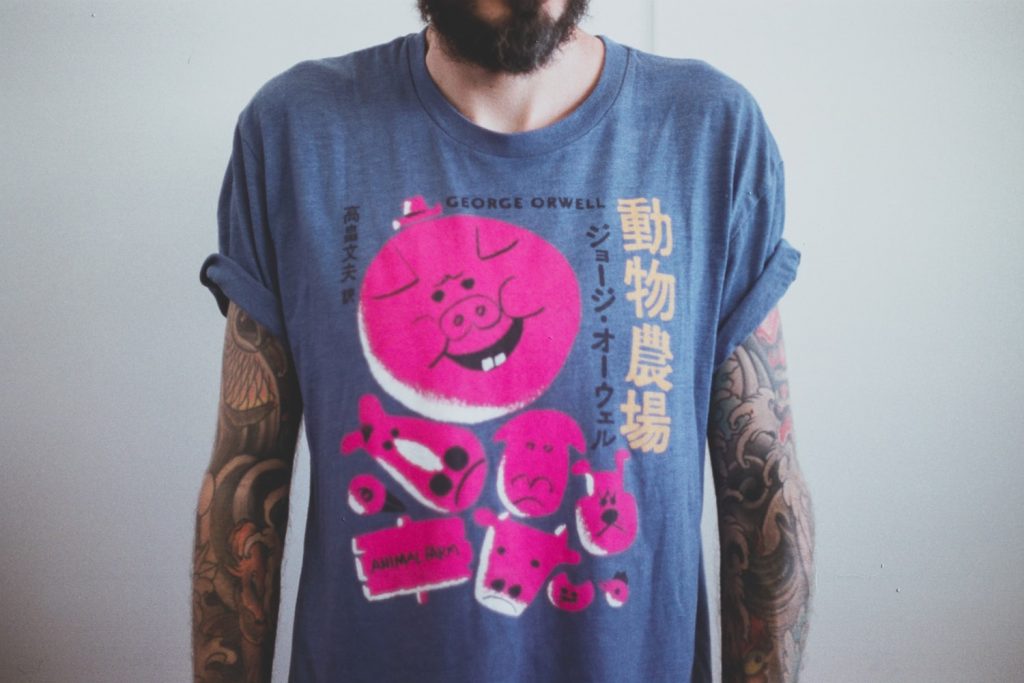
Some common missteps graphic designers make when designing a t-shirt include excessively spacing out the details, or huddling them up too close. Avoid placing the design off-balance, such as when it’s too heavy on one side and sparse on the other. There are also cases when the type is placed in the wrong order, distorting the message on the shirt.
If you want to put several elements on your t-shirt design, give a lot of effort and time to neatly arranged everything and have another person validate it through feedback to ensure that the design is aesthetically pleasing to someone else as it is to you.
4. Pay attention to image quality

The image file might be good enough to view, but a low-resolution image will not look good on print. When creating a t-shirt design, stay away from low-res and ensure that the pixel information is adequate for a quality print.
Images taken from the web are usually too small—rarely full size and only at 72 dpi. The ideal setting for a print is 200 dpi and at full size.
It’s also preferable to use vector files because these can be scaled to print without losing its quality. These file types include PDF, AI, EPS or SVG. For photographs, it’s better to scan at high resolution rather than taking a picture of it. Photos on photo tend to be blurry and sometimes unnecessarily cropped.
5. Complex or simple?
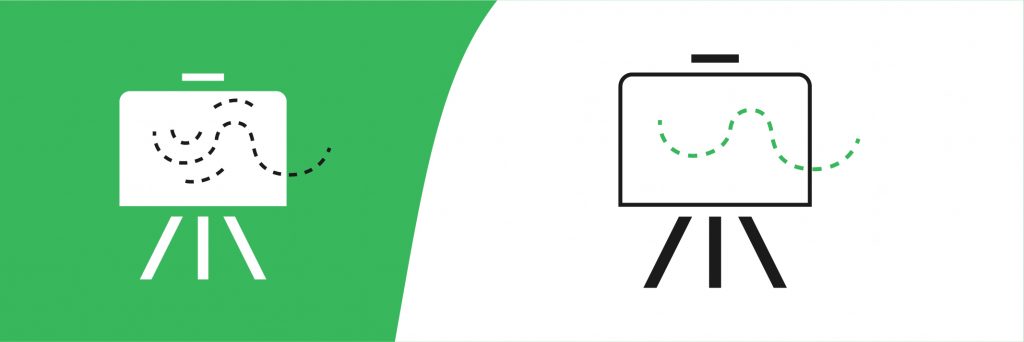
In graphics and anything else, adding too many intricate details on a t-shirt design can ruin its overall aesthetic value. The human attention span lasts only for a few seconds, and you must make the best impression during those seconds. Shirt design is a moving graphic ad, so keeping it simple is better.
When trying for originality and creativity, it’s easy to get carried away and put in as many elements as possible, but stacking images, one on top of the other, creates weird angles and messes up the composition. You don’t want the concept to be messy and headache-inducing to the viewer.
It would be remarkable to have a well-executed masterpiece printed on a shirt, but complex doesn’t always mean it’s more attractive.
Minimalistic designs also do well on the market as long as it delivers the message and brand identity across.
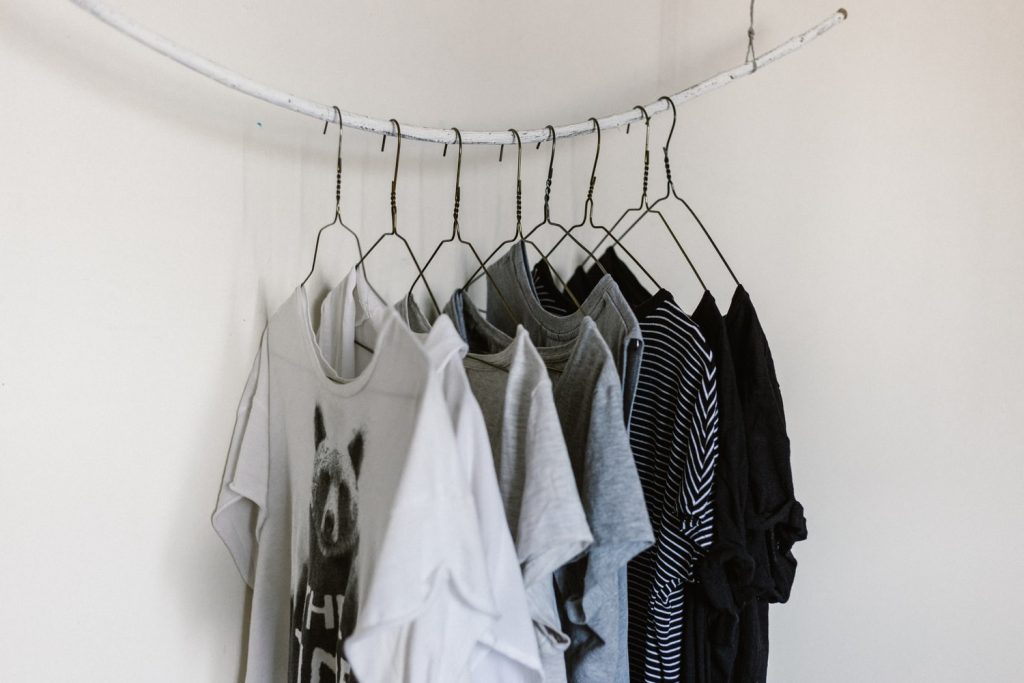
Remember, it shouldn’t be so hard to figure out what the shirt wants to convey. Optimize the design, so it looks clean yet impactful. It might sound hard to achieve but if you get the concept right, it should be easy to finalize the design that would look perfect when printed on a shirt.
Conclusion
Creating the perfect t-shirt design not only takes graphic design skills but also the knowledge of what works and doesn’t work for print. You can draw inspiration from social media platforms and other t-shirts that you happen to see, but don’t forget that keeping it original and authentic to the brand is the best way to go!
Catch these bestselling t-shirts from Printify and place your design on them, before they’re gone.
Make it happen today!
FAQ
The best-selling t-shirt designs are usually simple, relatable, and trend-driven. Minimalist graphics, witty text, retro themes, and niche interests (like pets, fitness, or gaming) usually perform well. Market research tools (Google Trends, Etsy best-sellers, or social media hashtags) can help you spot trends before you design.
A successful t-shirt design balances clarity, originality, and wearability. It should clearly communicate the idea, look good in different sizes and colors, and fit the target audience’s lifestyle. POD tools like Printify’s Product Creator let you test mockups before selling to ensure your design works in real life.
It depends on your needs:
- Printify – Best for beginners. Free design tools with AI, text, and pattern features, ideal for designing and selling with global POD fulfillment.
- Canva – Great for beginners with pre-made templates.
- Adobe – Beginner and professional-grade tools for designers of all skill levels. Also comes with AI features and pre-made templates.
If you want to design and sell, Printify combines both design tools and eCommerce integrations.
Sign up for a free Printify account, choose a t-shirt from the Catalog, and hit Start designing. With the Product Creator, you can upload your own visuals, explore the free Graphics Library, add custom text in any font, or even generate unique AI-powered images – all in just a few clicks.








